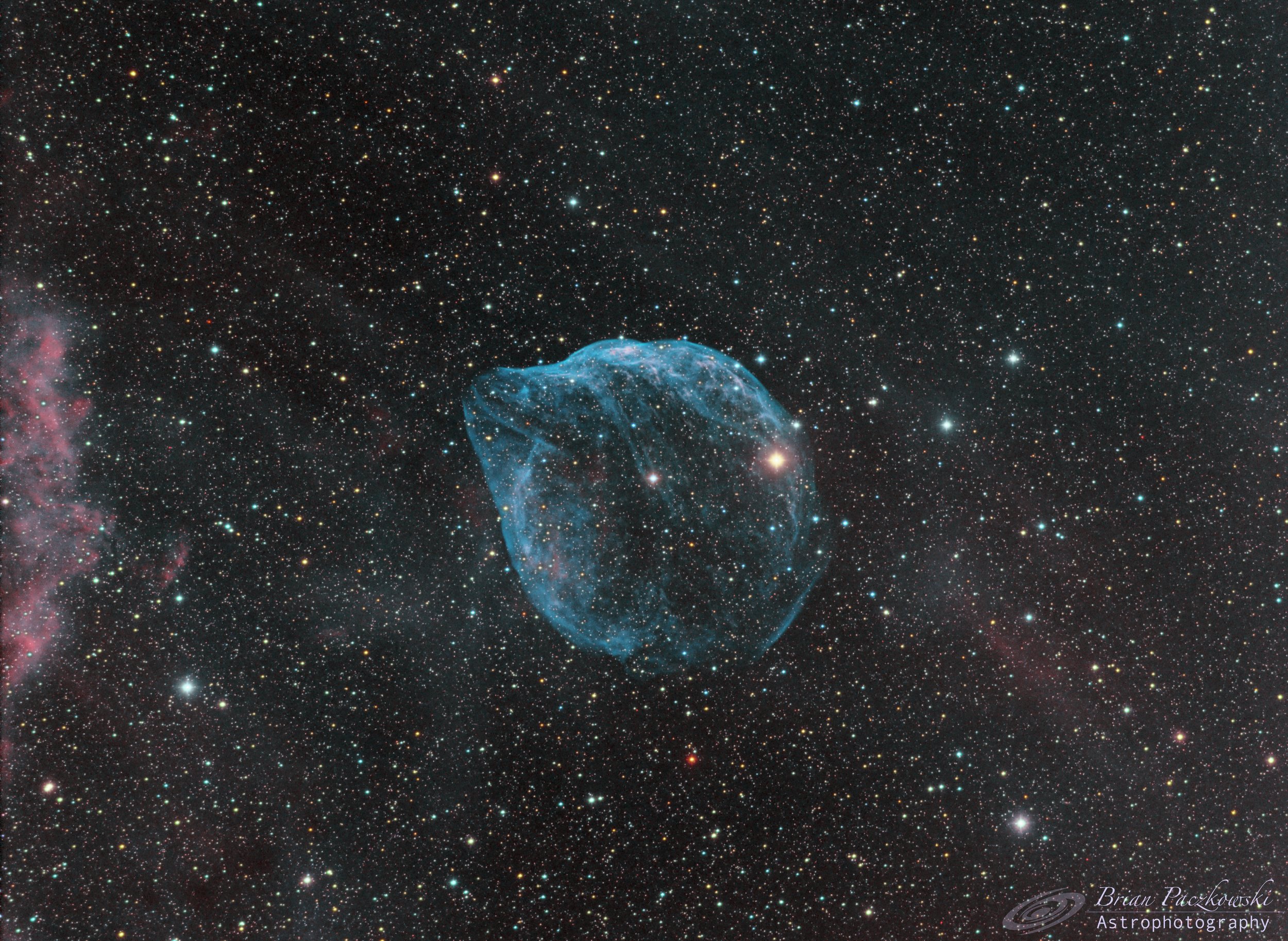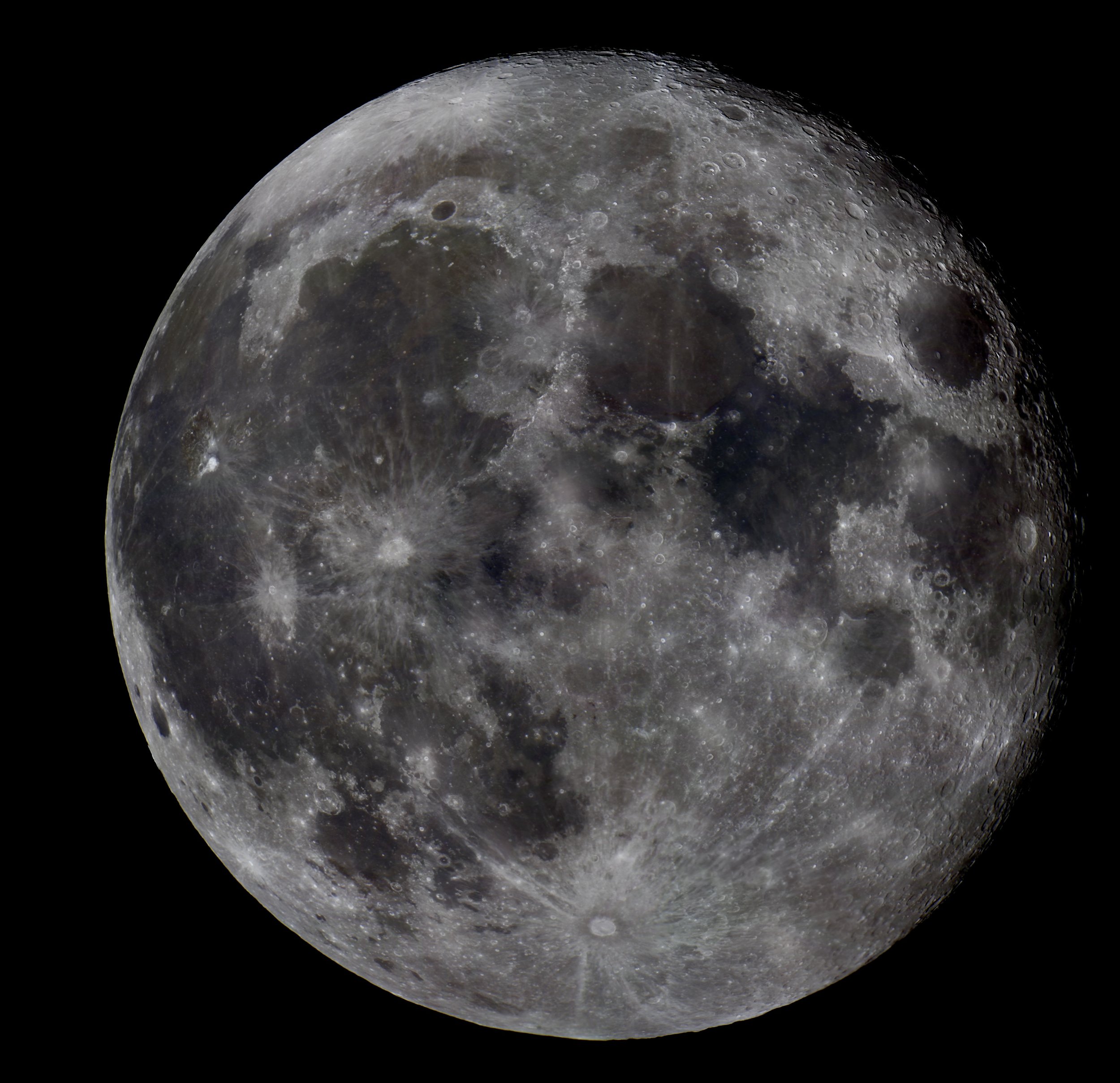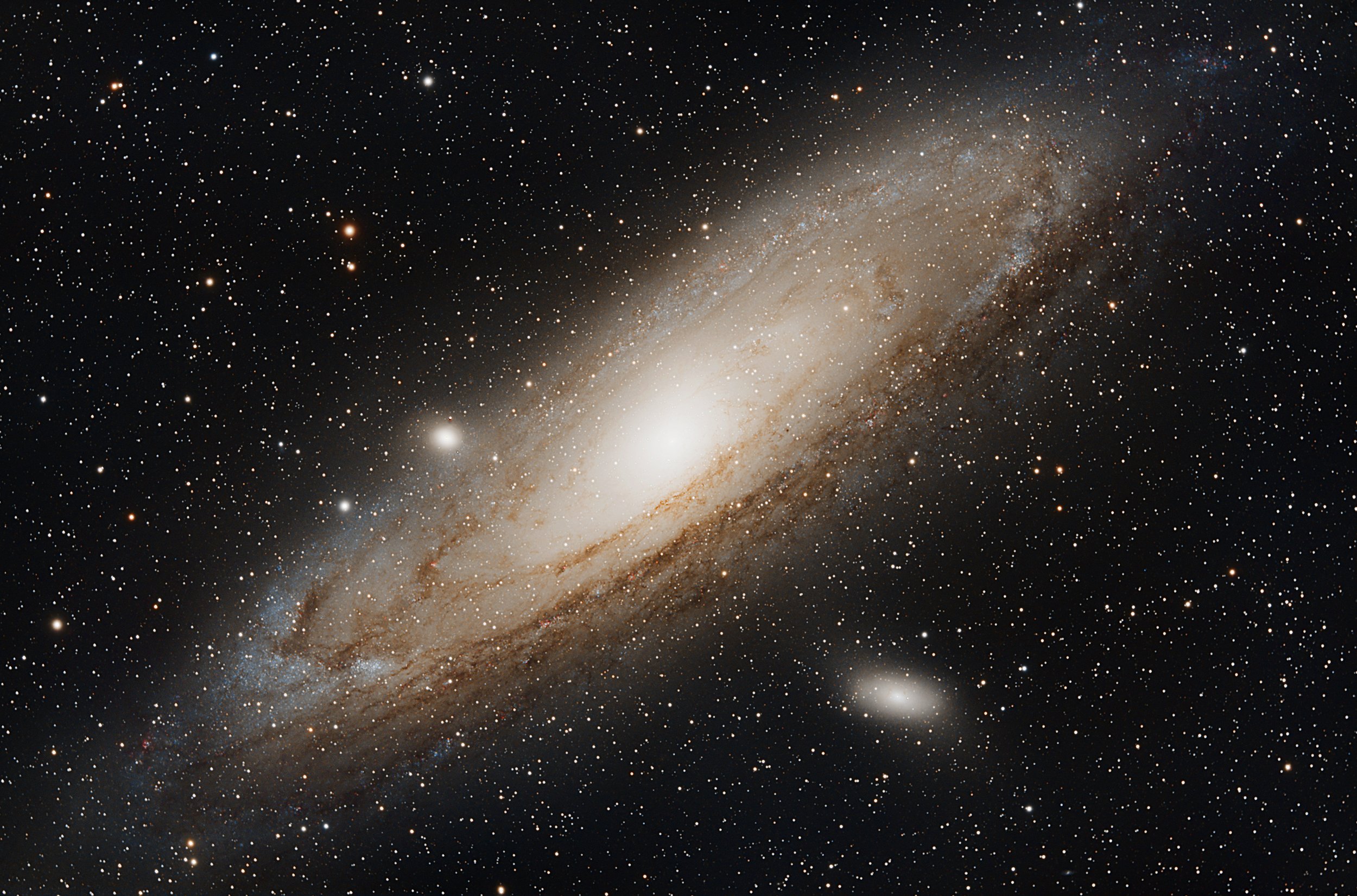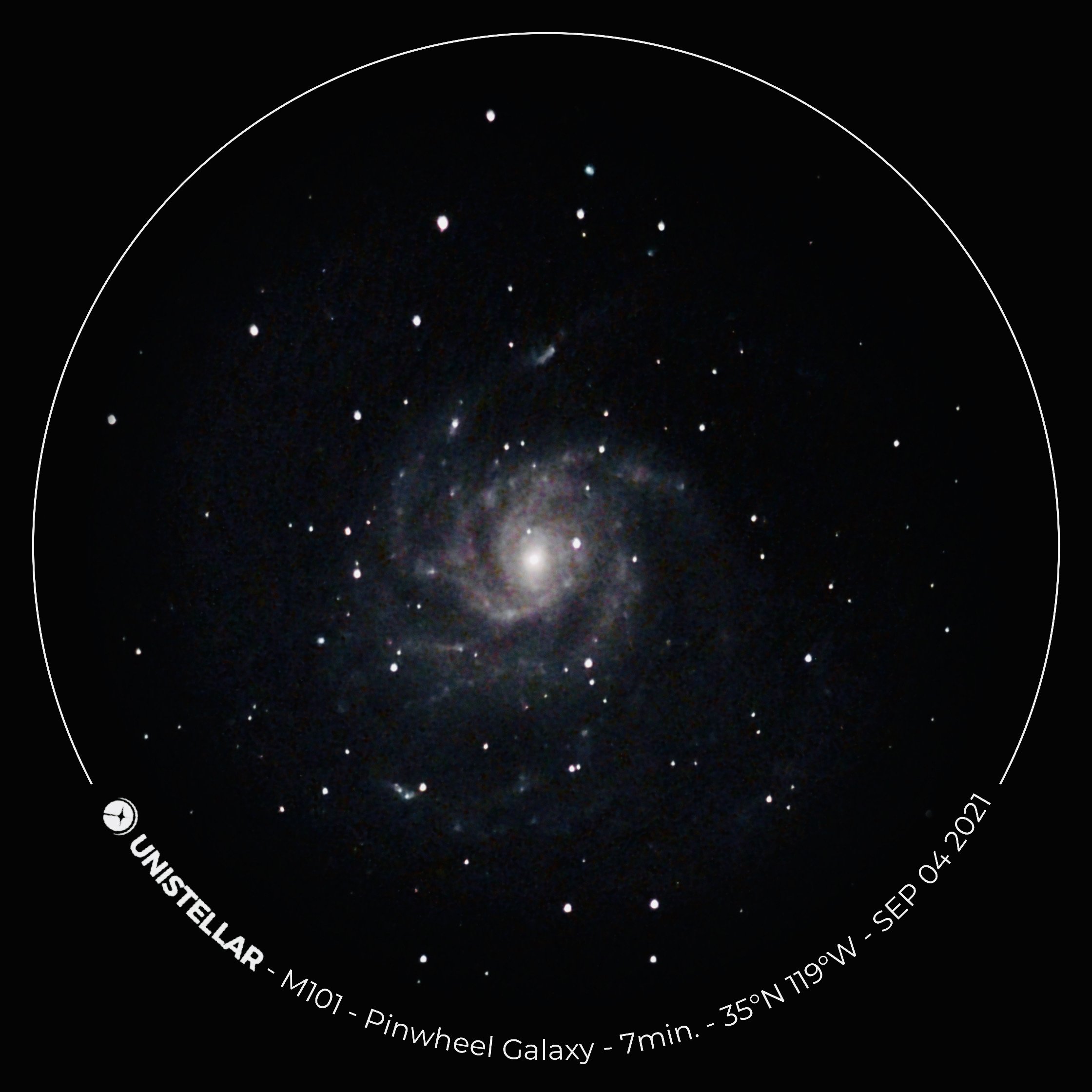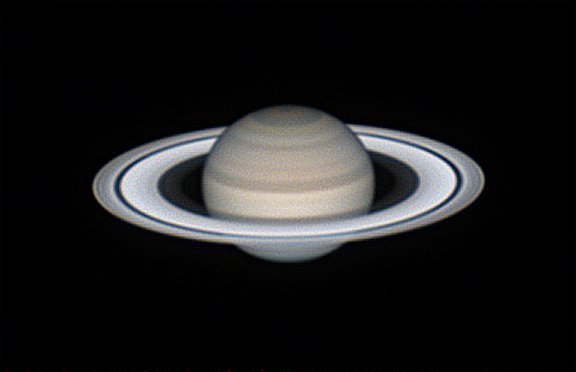
Multiple-Image Astrophotography Entries
Entries may be compose of multiple images (including light frames, dark frames, flat frames, etc.). The final image may also be a photo mosaic.
-
![]()
Horsehead and Flame Nebula
Jay Landis: Horsehead and Flame Nebula
Equipment:
Canon 80D one shot color from Lockwood
ZWO ASI 1600MMPro 7nm Halpha from my backyard near LAX
Celestron CGX guided with ZWO ASI 290MM and Orion Short Tube 80
Exposure & Processing:
Canon 80D 10 10-min exposures
ZWO ASI 1600MMPro 46 10-min exposures
Pre and Post Processing in Pixinsight -
![]()
Dolphin Head Nebula (Sh2-308)
Brian Paczkowski: Dolphin Head Nebula (Sh2-308) in the constellation Canis Major. This bubble-like nebula surrounds a Wolf-Rayet star EZ Canis Major. The visual magnitude is 7.0 with an apparent dimension of 35 arcmin x 35 arcmin. This was a difficult target to acquire since it's only above 30 degrees in altitude for about 3 hours per night.
Equipment:
Taken remotely with my telescope located in New Mexico.
Televue 76 with focal reducer
10Micron GM2000 HPS II mount
QSI 683 CCD camera with Astrodon LRGB Ha OIII SII filters at -20C
Exposure and Processing:
This is a HOO (Hydrogen-OIII-OIII) composite with RGB data added for star colors. This composite is made from 27 hours of narrowband data and 9 hours of RGB data.
Ha: 70 x 10 min (unguided)
OIII: 90 x 10 min (unguided)
R: 90 x 2 min (unguided)
G: 90 x 2 min (unguided)
B: 90 x 2 min (unguided)
30 Flat frame per filter
50 Dark frames per exposure duration
50 Bias frames
Acquired using SGP
Processed in PixInsight and Photoshop
-
![]()
NGC 7000. The North American Nebula
Thomas Douglas: NGC7000, The North American Nebula. Emission nebula in the constellation Cygnus. Magnitude 4.
Equipment:
Shot Oct 2, 2021, Lockwood Valley, CA. 100 x 120" exposures.
RASA8, 294MC camera, EQ6 Mount.
Exposure and Processing:
Unity Gain on 294MC (-10 deg c)
Processed in PixelInsight and Photoshop. -
![]()
The Moon
Tim Durham: A composition of images taken by me and my daughter (who is also a LAAS Member, Hazel Jay Bates Durham) of the moon on Sept 20th/21st. We're still new at this, but thought the contest would be fun.
Equipment:
Canon 7D, through a 3x barlow lens, and a Celestron
127SLT Telescope.
Exposure and Processing:
Aligned and sharpened in Registax, merged and adjusted in Photoshop.
1,500 frames per capture, 29 captures.
Best 25% of frames used in Registax
Taken from Los Angeles.
-
![]()
NGC 7000. The North American Nebula
Rafael Gonzalez: Northern American Nebula Ngc 7000 Caldwell 20
Visual magnitude + 4.00 Apparent size 120.o' 100.o arcmin
Equipment:
The telescope used was a Celestron RASA 8 inch on a Celestron AVX mount In a Bortel 3 area in Lockwood Valley California.
Exposure and Processing:
This image was a total of 1 hour 35 minutes 1 minutes subs
30 dark frames process in Lightroom and used in Sharpcap Pro and light pollution extraction on siril. -
![]()
The Brain or Popped Balloon Nebula (LBN 576)
Ryan Haverson: LBN 576: Brain or Popped Balloon Nebula
I really enjoy doing these super dim targets that look like nothing in the individual subframes and only really pop once you get 10, or 20 hours on them. I could not find a lot of details about this target from the usual sources, but did find a source of info here:
http://www.arizonanightskies.com/lbn-576.html.
“LBN 576 (also known as Abell 85 and CTB 1) is a faint supernova remnant lying almost 10,000 light years away. Coincidentally, it is also around 10,000 years old. Until recently it was thought to be a planetary nebula
but recent studies confirm it to be a supernova remnant, the closest one known to Earth. Supernova remnants result from the explosion of a star in a supernova and are bounded by an expanding shock wave. They consist of ejected material expanding from that explosion. Also appeared on “Starship Asterisk,” the main discussion venue for the Astronomy Picture of the Day (APOD) October, 2014.”
Equipment:
Williams Optics FLT 132 on CEM 70. Celestron OAG with ASI174mm mini guide camera. Imaged with ASI294mm and a set of Astrodon Narrowband Filters.
Exposure and Processing:
Approximately 400 subs at 6 min (~40h) at unity gain.
Taken from my backyard in Pasadena, CA.
Captured using NINA nightly builds (I am a patreon for the dev team, they are amazing contributors to the astrophotography community).
Processed with PixInsight. -
![]()
M13
David Nakamoto: M13
Equipment:
Orion G10 cooled CMOS camera.
Ford Observatory's 18-inch f/7 Newtonian.
Home-made German equatorial mount.
Exposure and Processing:
25 four secs exposures for 100sec total exposure time.
Stacked through Sharpcap's Livestack feature.
Paint Shop Pro used to enhance contrast and sharpen the image. -
![]()
Andromeda Galaxy (M31)
David Krider: Andromeda Galaxy, M31
Equipment:
ZWO ASI2600MC camera, Stellarvue 102T-R scope,
iOptron GEM45 mount, Optolong L-Pro Filter
Exposure and Processing:
Exposure time: 900 x 120s Lights, 60 Flats, 20 Darks
Software: PixInsight, Photoshop
Location: Backyard in La Canada -
![]()
Tarantula Nebula
David Yakerson: Tarantula Nebula
Equipment:
Unistellar eVscope
Exposure and Processing:
5 minute image stacked internally in Ev Scope
Taken at Lockwood -
![]()
Pinwheel Galaxy
Tim Russ: Pinwheel Galaxy, Magnitude 7.86
Equipment:
Unistellar eVscope
Exposure and Processing:
7 minute exposure stacked by eVscope -
![]()
California Nebula
Stelios Touchtidis: California Nebula
Equipment:
Stellarvue SVX70T scope on AP Mach1 GTO
ASI1600MM-C with Astronomik Ha and Oiii filters
(and RGB for star color)
Exposure and Processing:
Total integration 6.2 hours
Processed in Pixinsight -
![]()
Saturn
Gilbert McFarlane
Saturn (!)
Taken 8/3/2021 from my backyard in ventura.
Camera: asi224mc, with zwo ADC and 2.5x powermate.
Telescope, 12.5" amateur made newtonian and German Equatorial mount.
AutoStakkert3, RegiStax6, Photoshop. -
![]()
Wizard Nebula
Max Senin: Wizard Nebula (NGC7380) in the constellation Cepheus.
The active star forming region lies at a distance of 7,200
light years from Earth and has an apparent magnitude of
7.2; 200 light years in diameter and roughly 25 arcminutes
of sky between Bubble Nebula and Elephant Trunk Nebula.
Equipment:
Celestron EdgeHD 8" F/10 + 0.7x Celestron reducer
(effective focal length 1475mm F/7)
Filters: 6nm Optolong H-alpha, OIII, SIIZWO EFW, ZWO EAF
Main camera: ZWO ASI294MM Pro cooled to -10C
Guideing: ZWO ASI174MM Mini with Celestron OAG
Mount: SkyWatcher EQ6/R Pro
Capture: ZWO ASIAIR Pro
Exposure and Processing:
90 minutes per channel
AstroPixelProcessor, PixInsight, Topaz Denoise AI, Topaz Gigapixel AI. -
![]()
M33 Galaxy
Berry Megdal: M33 Galaxy
Equipment:
AP206 scope, FLI16803 camera, Astrodon LRGBHa filters.
Exposure and Processing
10 hours luminance, 6 hours each R, G, B, Ha
Taken at Lockwood Valley, CA


